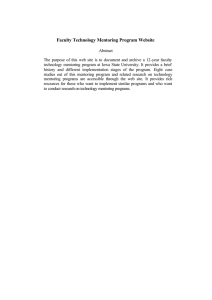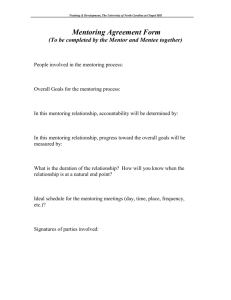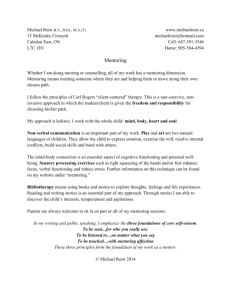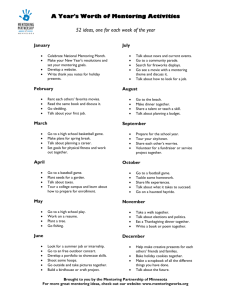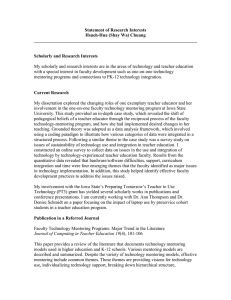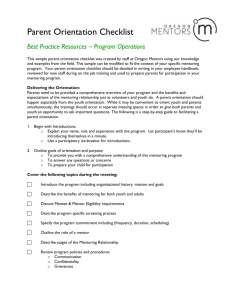Abstract Full Paper Rational:
advertisement
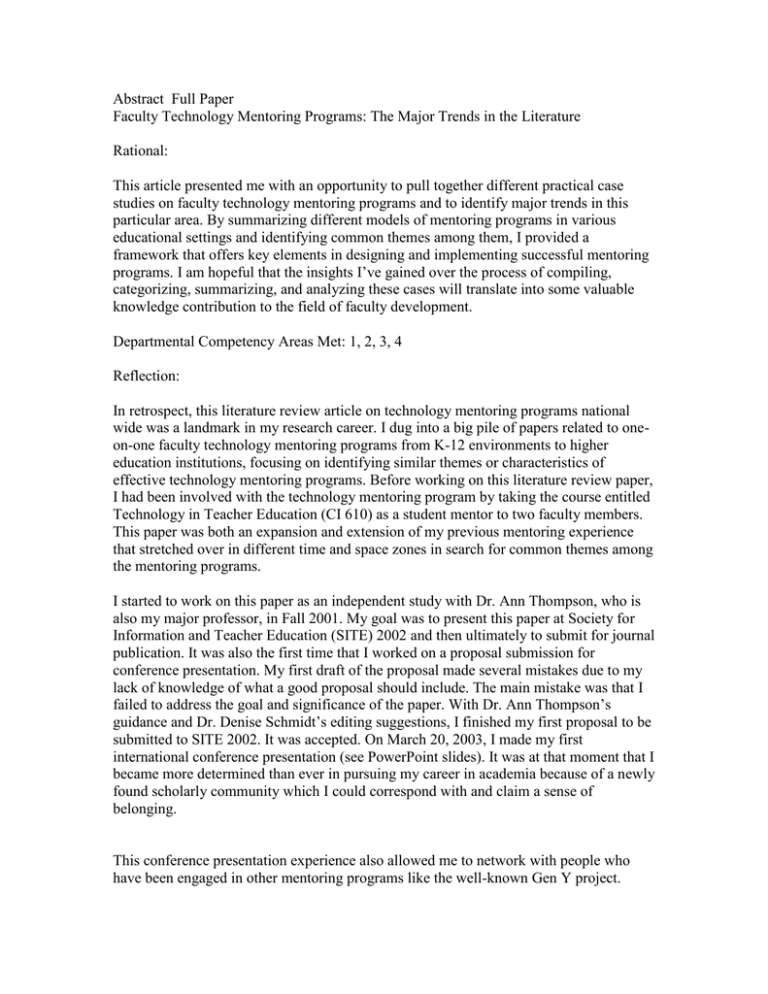
Abstract Full Paper Faculty Technology Mentoring Programs: The Major Trends in the Literature Rational: This article presented me with an opportunity to pull together different practical case studies on faculty technology mentoring programs and to identify major trends in this particular area. By summarizing different models of mentoring programs in various educational settings and identifying common themes among them, I provided a framework that offers key elements in designing and implementing successful mentoring programs. I am hopeful that the insights I’ve gained over the process of compiling, categorizing, summarizing, and analyzing these cases will translate into some valuable knowledge contribution to the field of faculty development. Departmental Competency Areas Met: 1, 2, 3, 4 Reflection: In retrospect, this literature review article on technology mentoring programs national wide was a landmark in my research career. I dug into a big pile of papers related to oneon-one faculty technology mentoring programs from K-12 environments to higher education institutions, focusing on identifying similar themes or characteristics of effective technology mentoring programs. Before working on this literature review paper, I had been involved with the technology mentoring program by taking the course entitled Technology in Teacher Education (CI 610) as a student mentor to two faculty members. This paper was both an expansion and extension of my previous mentoring experience that stretched over in different time and space zones in search for common themes among the mentoring programs. I started to work on this paper as an independent study with Dr. Ann Thompson, who is also my major professor, in Fall 2001. My goal was to present this paper at Society for Information and Teacher Education (SITE) 2002 and then ultimately to submit for journal publication. It was also the first time that I worked on a proposal submission for conference presentation. My first draft of the proposal made several mistakes due to my lack of knowledge of what a good proposal should include. The main mistake was that I failed to address the goal and significance of the paper. With Dr. Ann Thompson’s guidance and Dr. Denise Schmidt’s editing suggestions, I finished my first proposal to be submitted to SITE 2002. It was accepted. On March 20, 2003, I made my first international conference presentation (see PowerPoint slides). It was at that moment that I became more determined than ever in pursuing my career in academia because of a newly found scholarly community which I could correspond with and claim a sense of belonging. This conference presentation experience also allowed me to network with people who have been engaged in other mentoring programs like the well-known Gen Y project. Later, I began on developed a website on faculty technology mentoring program with a focus on the Iowa Sate University model. However, the purpose of this website is not confined to document and archive artifacts in the ISU’s mentoring program. The website would also serve as a resource to related programs and research findings in the faculty mentoring program as an approach of faculty development. As I become more and more engrossed in the research and scholarly work process, I have found the need to provide a theoretical framework to the mentoring model. I have tried using Activity Theory to lay out how tool-mediated and goal oriented features of Activity Theory contributes to a successful mentoring program. Future work in adopting some change theories in explaining how the faculty mentoring program has an impact on the systematic change in teacher education is an area needs further exploration. To sum up, this paper contributes a great deal to forming and articulating my scholarship focus in the field of faculty development. It serves as a stepping stone to elevate me to where I am and what I will be in the future.
